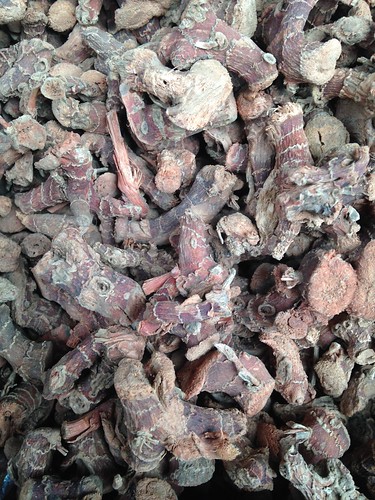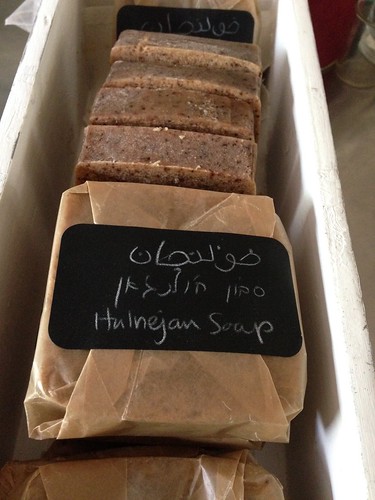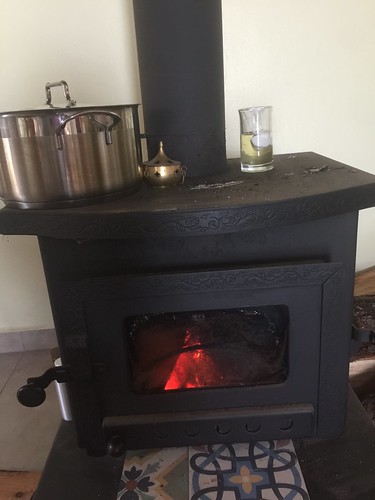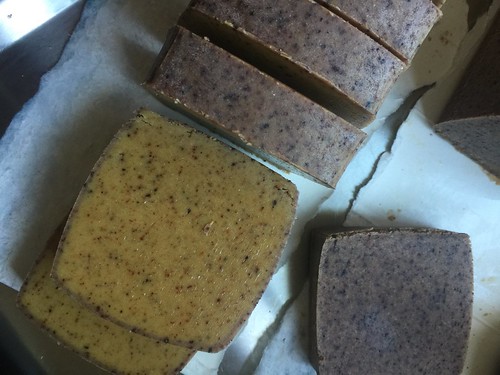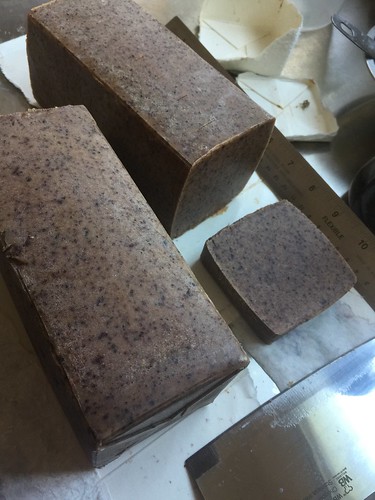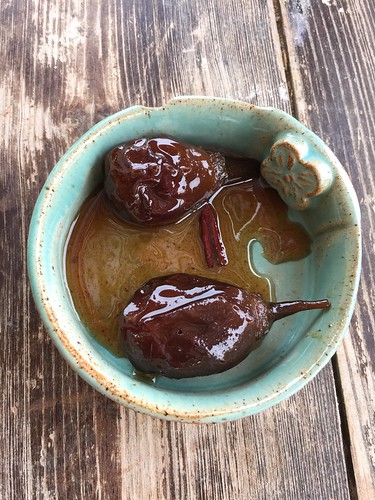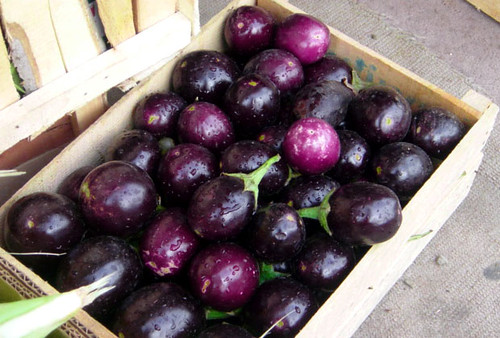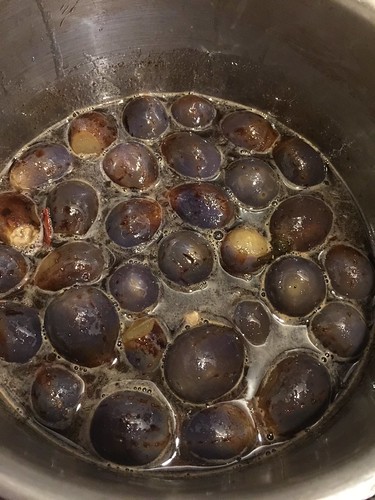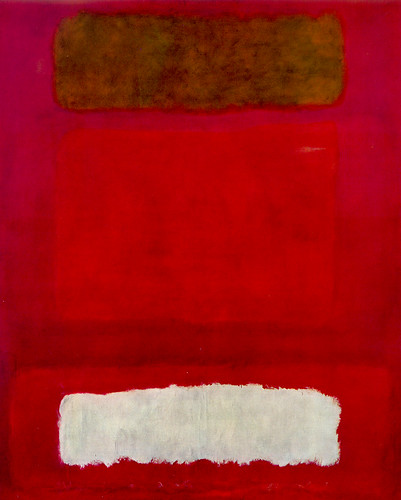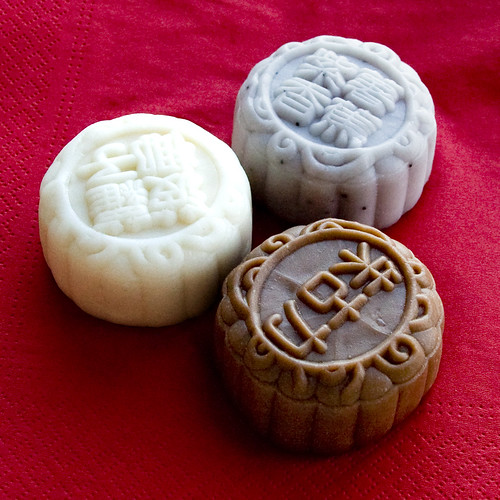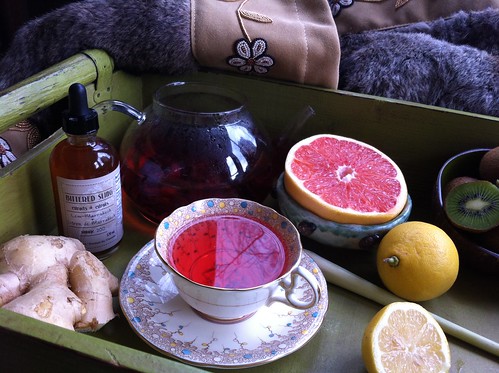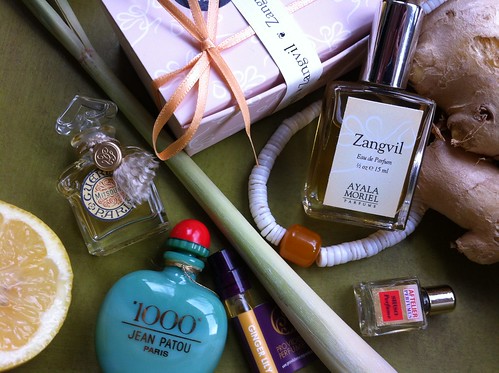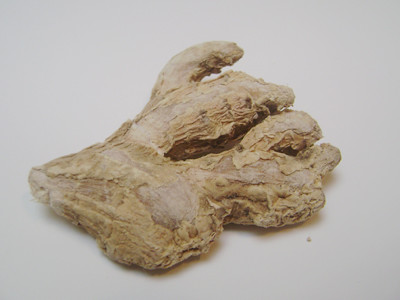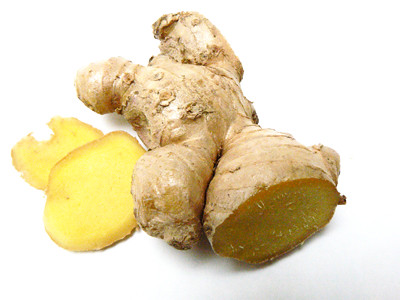Ginger (Zingiber officinale) is the rhizome of a tropical plant, related to cardamom (as we mentioned earlier), only that it is the rhizomes, not the fruit or seed that is used – in herbal medicine, aromatherapy, as a culinary spice, and in perfume. Native to Southeast Asia, and cultiaved in tropical countries throughout the world - across Africa, the West Indies, Caribbeans, etc.
In Hawaii, the hoola dancers use the fragrant ginger flowers (or "lilies") in their leis along with plumeria, tuberose and gardenia. In aromatherapy, ginger is considered a nerve tonic, especially effective for nervous exhaustion and fatigue, and - similarly to its used in Chinese medicine and Ayurveda - it is used to aid digestion and to fight colds, flu and other "moist and cold" respiratory and gustatory conditions.
The dry roots can be cooked in soups, stews, chai teas and ground for herbal preparations, including some over-the-counter drugs against nausea. In countries where the root cannot be grown - it is mostly the dried rhizomes that were used, as a spice. Throughout North Africa and Arabia, dried and powdered ginger roots found their way to many spice blends such as Hawaij (Yemen), Baharat (Arabia) and Ras el Hanout (Morocco). The Druze in Lebanon, Syria and Israel/Palestine enjoy a warming drink throughout the winter made of dried ginger roots and a hulnejan root, that is believed to protect the body against colds and flu.
However, in European and Western cuisine, the dry roots (usually ground) are more widely used - for practical and historic reason: ginger is not native to those countries, and was introduced to them as a spice, imported from far away tropical countries aboard ships. Therefore - most of these cuisines have used the dried ginger root in spice mixes for breads, bread puddings, cookies, etc. - gingerbread and pumpkin spice being the two most popular and widely recognizable forms of ginger. And only later, as the cuisines of those countries became more versatile and open to the use of spice (with influences from North Africa, India, etc.) - they've also incoporated dried ginger roots in soups, stews and so-called "curry" blends from pre-ground (and usually un-roasted) spices.
The fresh root is better for chai, in my opinion (the dry one having a more musky, peculiar, and somewhat unpleasant after-note), and is used in countless Chinese, East Indian and South East Asian cuisines.
Ginger is good for indigestion, and is wonderful thing to add to bean stews to prevent discomforting gases that are often associated with this excellent-otherwise plant-based source of protein. It's used in countless Indian curries, including Rajam Chawal (beans and rice). Fresh ginger is easily incorporated in any stir-fry and in present in countless Chinese, Korean and Japanese stir-fries, soups, stews and dumplings. And of course - the slices of ginger are pickled in rice vinegar as an acidic accompaniment to sushi and sashimi. Fresh grated ginger - as well as its close relative, the galangal root - are an essential component in Southeast Asian curry pastes along with lemongrass and other citrusy components (kaffir lime leaf and zest, for example) - giving Thai and Malaysian curries their distinct freshness and balanced flavour.
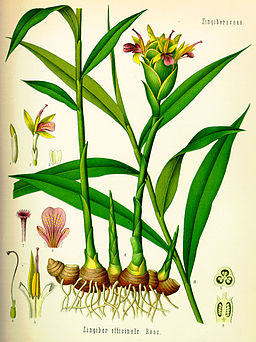
Although for culinary and medicinal use both the dry and the fresh roots are used almost interchangeably, as far as aroma goes – there is quite a big difference between dry and fresh ginger: Fresh ginger oil smells Sharp, peppery, root-like, citrusy-fresh, earthy, woody, dry, a tad floral, grassy. Ginger oil from the dry roots smells rather unpleasant in my opinion - rather sharp, grassy, and even a little oily. However, ginger CO2 from the dry root smells candied, spicy, warm, sweet, overtones with hints of fresh-citrusy, tangy character, resembling closely the sensation when enjoying crystallized or candied stem ginger. Tart, sweet, warm and refreshing are a few of the adjectives that come to mind when experiencing a high quality ginger essence.
As an aphrodisiac, ginger works like most other warming spices – increase circulation and create a warm fuzzy feeling when smelled, inhaled or enjoyed in beverages and delicious foods. Ginger is also one of the main ingredients in pumpkin pie spice - which a famous study found that men found the scent to be most arousing. But most importantly - ginger tones the nervous system and dissolves nervous exhaustion and fatigue, neither is particularly sexy or appealing... In her book "The Fragrant Mind", world renown aromatherapist Valerie Ann Worwood recommends it against sexual anxieties, and recounts the oil's personality as very sexual and confident.
Using ginger in a menu for an aphrodisiac dinner would be a great idea – and also will help ease digestion, so that it does not get in the way of other things later on…It imparts a unique fresh and subtly pungent flavour to masalas, stir fries and curries. The fresh ginger root can be incorporated into beverages - cool or warm. warm ones, such as the classic chai tea or hulnejan I mentioned above, or more innovative concoctions such as
Aftelier's Rose Ginger oolong, and my own
Zangvil tea. Or cool ones - such as your own aphrodisiac "ginger ale" with fresh ginger juice, some honey or raw sugar and sparkling water and a slice of lemon, or add some ginger juice to a white wine like the Romans did. Ginger juice is quite a revitalizing beverage as long as it's balanced with less pungent fruit or vegetables - try juicing it with carrot, pineapple, orange - or any combination of these four that strikes your fancy!
And of course - we can't forget about dessert! Besides the usual suspects (pumpkin pie, ginger snaps, candied ginger and ginger-spiked chocolate truffles or bars) - there are also more unusual ones to discover that I would have never dreamed of myself! When I saw Steamed Milk with Ginger on the menu of Sun Sui Wah (one of Vancouver’s finest Dim Sum restaurants), it sounded peculiar – as it sounded more like title of a a hot beverage in a coffee shop. When I finally mustered the courage to order it, I discovered that in fact it’s more like a pudding – and further research into the matter (when looking for a recipe) revealed that it is actually a Ginger Milk Curd - an unusual hot dessert that takes advantage of a chemical reaction between hot milk's proteins and fresh ginger juice, forming it immediately into squiggly, slippery pudding. I strongly urge you to try this at home – it is quite the delicacy, and there are even YouTube tutorials to guide you step by step!
For a sensual aphrodisiac massage with ginger, try this:
1Tbs light (aka unroasted) sesame oil
1 drop ginger essential oil or CO2
2 drops jasmine absolute
3 drops frankincense essential oil
You can may also use this blend to condition and perfume your hair.
For a revitalizing room scent, place in the diffuser one drop of each ginger, jasmine and lemongrass. You may also use this combination for a scented bath, to overcome fatigue - one of the worst mood killers after stress.
And of course - there are some perfumes that were already prepared and ready for you to revel in before you embark on your seductive adventures. Here are a few suggestions for aphrodisiac perfumes with a noticeable ginger note: Bois des Îles (Chanel), Camille (JoAnne Bassett), Classique (Jean Paul Gaultier), Cognac (Aftelier), Eau de Reglisse (Caron), Ginger Ciao (Yosh), Ginger Essence (Origins), L’Herbe Rouge, Lys Méditerranée, Orcas, Réglisse Noire (1000Flowers), Sahar (The Scented Djin), Tilda Swinton Like This (Etat Libre d’Orange), Zangvil.
